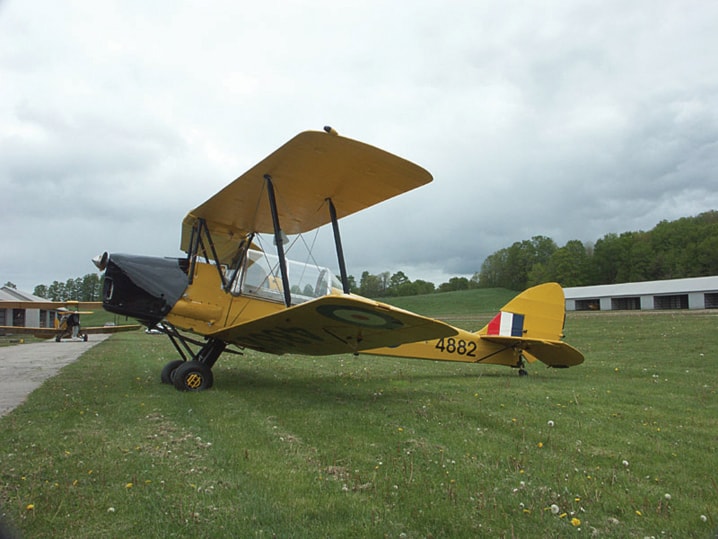When a vintage Tiger Moth biplane trainer was donated to the Harvard Historical Aviation Society, the offer came with a challenging catch.
The plane had to fly again.
Fortunately, the society has just the people trained in the art of covering the wooden skeletons of old planes with the hardened fabric that preceded the days of stressed aluminum skins.
“We were very thrilled with this type of donation,” said society president Jodi Smith.
“We have people who are ready to go and get it flying.”
The biggest obstacle now is to find a place to do the work on the 70-plus-year-old plane, which was largely restored by longtime Sundre Flying Club member Alf Bicknell before he passed away in 2012 at the age of 84.
What is needed is an empty bay or some other similar space where society members can work their magic and turn the disassembled plane into flying history.
A suitable workshop is planned as part of the society’s goal to build a restored H-Hut as a museum at Springbrook, but that project is still a few years off. Fundraising is well underway for that $300,000 project.
H-Huts were easy-to-build structures named for their distinctive shape that housed thousands of airmen who came to Penhold to train as part of the British Commonwealth Air Training Plan during the Second World War.
Once a suitable work space can be found, Smith hopes to have the plane up in the air in a year or two.
The Tiger Moth was donated by Bicknell’s family on the condition it be restored to airworthy status and flown to the Sundre Fly-In Breakfast in memory of the well-known area pilot.
In his flying career, Bicknell flew more than 25,000 hours in 87 different types of aircraft and was well-known in aviation circles.
Hundreds of Tiger Moths were built as elementary trainers to give prospective pilots their first taste of flying. Bicknell’s Tiger Moth spent most of its life at the Elementary Flight Training School in Bowden.
“It’s quite nice that it’s connected to the area,” said Smith.
During the Second World War, pilots would start there and then graduate to the Airspeed Oxford, a metal-skinned, two-engined trainer that was used at the Flight Service Training School in Penhold.
While it was not the usual ride at Penhold, a pair of Tiger Moths were sent to the base for use as utility planes, according to society research.
Penhold was closed after the war, but reactivated in the 1950s during the Cold War when Harvards became the training plane of choice.
Meanwhile, the society is busy putting together some historic displays to draw attention to the society and its museum plans. An exhibit will be set up at the Circuit Cafe at Red Deer Airport and another will likely go to the Penhold Library at the Multiplex.
Work is also nearing completion on a 3/4-scale Tiger Moth the society is building as a display. And a Second World War Jeep is being restored by a Penhold-area historical enthusiast.
The society will also be getting a T-33 jet trainer from the Alberta Aviation Museum in Edmonton. The plane would have been the next step for pilots who had completed their Harvard training at CFB Penhold and fits in with the society’s goal of saluting the area’s air training heritage.
For more information go to www.penholdbase.ca
pcowley@www.reddeeradvocate.com
